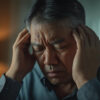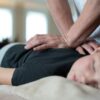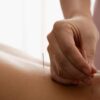Imagine experiencing frequent episodes of dizziness, lightheadedness, or difficulty maintaining balance while performing daily activities. Living with a vestibular disorder can be incredibly challenging, making activities like walking, driving, or even standing up disorienting and potentially dangerous. Navigating the world with an unsteady footing is not only physically challenging but may also lead to feelings of frustration, anxiety, and isolation. Thankfully, vestibular rehabilitation offers a targeted and effective solution for individuals struggling with balance and dizziness related issues due to vestibular disorders.
At Whitehorse Physiotherapy, our dedicated professionals are well-versed in the therapeutic interventions of vestibular rehabilitation, assisting patients in regaining balance and control over their lives. In this article, we will delve into the world of vestibular disorders, exploring the causes, symptoms, and diagnostic process. We will then examine the role of vestibular rehabilitation in addressing these often debilitating balance and dizziness issues, empowering you to tackle these challenges head-on and improve your quality of life.
1. Delving into Vestibular Disorders: Causes and Symptoms
Vestibular disorders can affect the inner ear or the central nervous system, resulting in issues with balance, spatial orientation, and overall stability. Some common conditions include benign paroxysmal positional vertigo (BPPV), Meniere's disease, vestibular neuritis, and labyrinthitis, among others. A variety of factors can contribute to the development of vestibular disorders, such as:
- Infections or inflammation
- Head trauma or injuries
- Age-related degeneration
- Autoimmune conditions
Symptoms of vestibular disorders can vary but often include:
- Dizziness or vertigo
- Imbalance or unsteadiness
- Spatial disorientation
- Visual disturbances or sensitivity to visual stimuli
- Tinnitus (ringing in the ears)
- Hearing loss
Due to the complex nature of vestibular disorders, it is crucial to consult a healthcare professional if you suspect you are experiencing symptoms associated with these conditions.
2. Diagnosing Vestibular Disorders: The Role of Healthcare Professionals
Accurate diagnosis of a vestibular disorder usually involves a comprehensive assessment by a healthcare professional, such as an audiologist, otolaryngologist, or physiotherapist. The diagnostic process may include:
- Medical History: Collecting a detailed medical history to identify potential risk factors, including a history of any injuries, illnesses, or medications that might be contributing to the symptoms.
- Physical Examination: A thorough physical examination, encompassing a series of tests to evaluate balance, coordination, eye movements, and hearing function.
- Imaging and Testing: In some cases, diagnostic tests such as MRI, CT scans, or vestibular function testing may be warranted to help establish a definitive diagnosis.
Once a vestibular disorder is diagnosed, appropriate treatment options can be explored to address the individual's unique symptoms and challenges.
3. The Fundamentals of Vestibular Rehabilitation
Vestibular rehabilitation is a specialized form of physiotherapy that aims to alleviate the symptoms of vestibular disorders through targeted exercises and therapeutic techniques. The primary goals of vestibular rehabilitation include:
- Habituation: Repeated exposure to specific movements, positions, or activities that provoke symptoms can help the brain adapt and react more efficiently, resulting in reduced symptoms over time.
- Gaze Stabilization: Training the eyes to focus and maintain a stable image during head movements can help improve visual stability and reduce disorientation.
- Balance Retraining: Strengthening the muscles and reflexes involved in maintaining balance can help improve overall stability and reduce the risk of falls or injuries.
- Education and Lifestyle Modifications: Understanding the underlying causes of vestibular dysfunction and making appropriate lifestyle changes can assist in managing symptoms and experiencing a better quality of life.
- The Benefits of Vestibular Rehabilitation: Regaining Control and Enhancing Quality of Life
Vestibular rehabilitation offers a variety of benefits for individuals grappling with the challenges of vestibular disorders:
- Reduced Dizziness and Vertigo: Vestibular rehabilitation can effectively alleviate the frequency and severity of dizziness and vertigo, enabling individuals to engage in daily activities with greater comfort and ease.
- Improved Balance and Coordination: By strengthening the muscles and reflexes involved in balance, vestibular rehabilitation can enhance overall stability, making activities like standing, walking, and reaching safer and more accessible.
- Increased Confidence and Independence: Regaining control over balance and dizziness issues can significantly impact an individual's ability to participate in everyday activities without fear or worry, fostering a sense of independence and improved self-confidence.
- Enhanced Quality of Life: Through targeted interventions, vestibular rehabilitation can alleviate many debilitating symptoms associated with vestibular disorders and contribute to an overall enhanced quality of life.
Conclusion
Living with vestibular disorders can be immensely challenging, but vestibular rehabilitation presents a formidable solution to help restore balance, overcome dizziness, and reclaim your independence. At Whitehorse Physiotherapy, our skilled team of professionals is ready to guide you through the transformative process of vestibular rehabilitation, providing personalized treatments designed to meet your unique needs and empower you to confidently navigate life's adventures.
Don't let the challenges of vestibular disorders hold you back. Book a consultation today and begin your journey to a more balanced, stable, and enjoyable future with the support of our dedicated team of experts. Contact Whitehorse Physiotherapy for virtual PT services.





